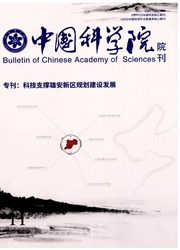

 中文摘要:
中文摘要:
中国的城乡分离和社会分化,已成为影响未来全局发展和实现社会和谐的核心问题。城市与乡村作为城市化进程的重要空闻组织形式,其地理空间、经济空间与社会空间的协同发展与否,是整合行政区划、产业布局和社会结构要素禀赋以及制定改变城乡二元结构的政策框架路线图的关键。本文以探索城市间、城乡间多维尺度下城乡一体化发展的宏观演化机制及微观要素特征为着眼点,全面考虑和谐城市“发展度、协调度和持续度”的整体协同与“社会、经济、科技、资源和环境”的时空耦合。该研究对中国新型城市化道路进行战略审视,系统剖析城乡一体化的区域格局、理论模式和战略体系,并以构筑城乡一体化的和谐城市为战略支点,结合区位优势的代表性、发展前景的带动性和示范价值的全局性,初步建立科学发展观指导下构建“和谐城市”的规范标识,为中国特色城乡一体化的和谐城市发展,提供理论依据和方法支撑。
 英文摘要:
英文摘要:
The aggravation of urban and rural disparity, acceleration of social differentiation are the two core issues influencing development future and society Harmony in China. Urban and rural areas are the basic space organizations of urbanization. The integrated development of geographic, economic and social spaces is the key point to match the essential elements among administrative divisions, industry layouts and social structures, especially to lay the foundation of policy road-map readjusting the dual structure in urban and rural. This paper focuses on the macro evolutional mechanism and micro essential characteristic in basis of multi-scaling integrative growth of city agglomerations, urban and rural areas, devotes to promoting the strategic co-ordination of measurements among development, synergy and sustainability in harmonious city, upon which the spatio-temporal coupling of society, economy, S&T, resources and environment can be promoted. This study advances a strategic survey on the road of the new-type urbanization, formulates the regional patterns, theoretic models and strategic framework of urban and rural integration. Based on the representative of location advantages, promotion of development prospects and overall significance of demonstration values, the regulations and standards building harmonious city according to the Scientific Development Concept can be obtained, which supply the theory basis and method support leading the road of the new-type urbanization with Chinese characteristics .
 同期刊论文项目
同期刊论文项目
 同项目期刊论文
同项目期刊论文
 期刊信息
期刊信息
